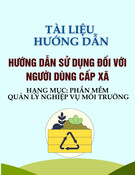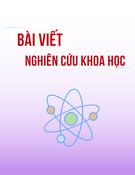
TAÏP CHÍ KHOA HOÏC VAØ COÂNG NGHEÄ ÑAÏI HOÏC COÂNG NGHEÄ ÑOÀNG NAI
58
Số: 03-2024
RICE BRAN OIL EXTRACTION USING ETHANOL AS SOLVENT
IN PRETREATMENT PROCESS
Nguyen Thanh Luan1, Huynh Thi Thuy Loan1, Huynh Kim Phung2*
1Dong Nai Technology University
2Hutech University
*Corresponding author: Huynh Kim Phung, hk.phung@hutech.edu.vn
1. INTRODUCTION
Rice (Oryza sativa) bran is a by – product
of milling in rice processing countries. The bran
derived from rice grain during the whitening
process is rich in protein, oil, and carbohydrate.
It is normally used for extracting oil and as
animal feed and a food ingredient.
(P.Hanmoungjai et al., 2001). Rice bran
comprises of 12 – 22% of oil, which contains
high unsaturated fatty acids and bioactive
phytochemicals (phenolic acids, flavonoids,
gamma – oryzanol, tocopherols, and sterols)
(Grosso et al, 2015, Pengkumsri et al, 2015).
The extraction of rice bran results in rice
bran oil as a byproduct. Rice bran needs to
undergo a process, in order to prevent the
deterioration of fat and valuable bioactive
compounds (P Loypimai et al., 2015). Many
stabilization methods have been reported in the
literature, such as steaming, ohmic heating (P
Loypimai et al ., 2015, AM Matouk et al.,2009),
ultrasound treatment (S Sayasoonthorn et al.,
2012, WW Huang et al., 2013), parboiling,
refrigeration and pH lowering (BMWPK
Amarasinghe et al., 2009), and microwave
radition (E Uquiche et al., 2008). There are
several techniques used for the extraction of
rice bran oil, including solvent extraction using
GENERAL INFORMATION
ABSTRACT
Received date: 01/04/2024
This research was conducted to determine the alcohol
concentration, alcohol immersion time and the ratio of raw
materials /solvent to separate the highest amount of wax in rice
bran before extracting rice bran oil. The treated rice bran was
two processes. Process 1: rice bran – steamed – pickled
ethanol – dry - extracted with hexane. Process 2: rice bran -
pickled ethanol – dry - extracted with hexane. The treated rice
bran was pickled ethanol in different ethanol 96, 90, 80, 70,
60, 50 and 40 respectively with raw materials/ solvent ratio of
1:5 (w/v). Rice bran was investigated for soaking time 15
minutes, 30 minutes, 1 hour, 2 hours, 3 hours respectively.
After that, To select the appropriate alcohol content and
soaking time were to investigate the ratio of raw
materials/solvent 1:1 (w/v), 1:2 (w/v), 1:3 (w/v), 1:4 (w/v), 1:5
(w/v), 1:6 (w/v) and 1:7 (w/v) respectively. The results
showed that the best soaking time to separate wax in rice bran
was 3 hours with the ratio of raw materials/solvent 1:6 (w/v).
Revised date: 06/05/2024
Accepted date: 30/05/2024
KEYWORD
Extraction;
Ethanol solvent;
Rice bran oil;
Wax extraction.

59
TAÏP CHÍ KHOA HOÏC VAØ COÂNG NGHEÄ ÑAÏI HOÏC COÂNG NGHEÄ ÑOÀNG NAI
Số: 03-2024
n – hexane, which is the most popular for
commercial conventional extraction. The use of
n – hexane in the conventional methods has
some drawbacks, due to its flammability,
toxicity, and the high temperatures involved in
the process, resulting in some undesirable
components in the oil as result of oxidative
deterioration, the development of rancidity, and
an off – flavor. Efforts have been made by many
researchers to explore different,
nonconventional techniques for oil extraction
and utilization. Some of these methods are
supercritical carbon dioxide extraction,
subcritical water extraction, and enzyme –
assisted extraction
However, there are no studies
pretreatment of wax content in rice bran using
ethanol as solvent before oil extraction.
Therefore, the goal of the study investigated
wax extraction method to replace cooling
process. That helps to increase the efficiency of
rice bran oil collection and reduce the use of
chemicals and the time to refine the bran oil.
Notably, the final oil exhibited light color and
retained nearly 80 % of the oryzanol of raw oil.
The yield of final oil reached 80–85 % through
the entire refining process.
2. MATERIALS AND METHODS
2.1. Materials
Rice bran purchased Tan An city, Long An
province and Cai Lay District, Tien Giang
Province, It was steamed at 125 ± 50C for 10
min, in order to minimize lipase activity, and
then dried in a hot air oven at 700C for 45 min.
Then it was milled and separated by a 60 – mesh
sieve (0.25mm) trainer. The final moisture
content was 6 – 8%, after that rice bran was
vacuum – packed and placed in a chiller at 50C
for further analysis (Hamm et al., 2013)
n – Hexane (97%) – Model Xilong China.
H3PO4 (85%) – Korea
NaOH (99%) – China.
Ethanol (96%) – China
Magnetic stirrer – model Hana HI 190 M
– 0 – 1000 rpm (IKA Works GmbH & Co. KG,
Germany),
Natural convection oven – model TR240
(Memmert, Germany),
Spectrophotometer UV – Vis model
NEUUV15 (Labomed, America),
Glass Soxhlet Extractor body and Graham
Coil Condenser Lab Glassware – 1000ml
2.2. Determinations of physicochemical
properties
2.2.1. Determination of protein content
The protein contents of the rice bran
samples were estimated as percent total
nitrogen by the Microkjeldahl procedure.
Protein (%) was calculated by multiplying the
per cent nitrogen by the fator 6.25 (AOAC.
Official method and recommended practices of
the AQCS. 4th)
2.2.2. Determination of moisture content
The moisture contents were determined by
drying 3g of rice bran sample in a hot air oven
maintaining temperature 1050C (AOAC
Official method 930.15)
2.2.3. Determination of fat content
Fat contents was estimated as crude ether
extracts using moisture free samples. The
solvent was removed by evaporation and the
residue of fat was weighed (AOAC. Official
method and recommended practices of the
AQCS. 4th). Samples were carefully weighed to
be 3g and were put in paper sleeves paved with
fat free cotton, then dried at 900C for an hour.
The dried samples were then placed in the dried
and measurably weighed Soxhlet apparatus.

TAÏP CHÍ KHOA HOÏC VAØ COÂNG NGHEÄ ÑAÏI HOÏC COÂNG NGHEÄ ÑOÀNG NAI
60
Số: 03-2024
Extraction with petroleum ether was done after
6h. Solvent was then purified by distillation,
and the extracts was dried at 1050C until
constant.
2.2.4. Determination of ash content
The ash contents of the samples were
obtained by dry ashing the rice bran samples
completely by heating it over a flame. This was
expressed as g/100 g of each sample (AOAC.
Official method and recommended practices of
the AQCS. 4th)
2.2.5. Effect of extraction of solvents and
extraction conditions on rice bran wax yield
The effect of soaking ethanol solvents, to
extract rice bran wax was studied. Rice bran
was extracted by using Soxhlet apparatus at
600C for ethanol concentration 40, 50, 60, 70,
80, 96 % (v/v) respectively, soaking time 15
mins, 30 mins, 1 hour, 2 hours, 3 hours
respectively and the ratio of ricebran/ethanol
(w/v) 1:2, 1:3, 1:4, 1:5, 1:6, 1:7 respectively.
Wax yeild was determined by using the
following equation:
2.2.2. Statistical analysis
Experiments were repeated 3 times.
Results are presented as mean ± standard
deviation, determined using Excel software.
Differences between treatments were
determined by ANOVA with 95% confidence
(or p <0.05), using Minitab software version 10.
3. RESULTS AND DISSCUSIONS
3.1. Nutrient composition of rice bran
Table 1. Nutrient composition of rice bran
Composition (%)
Content (%)
Protein (%)
14.34 ± 0.34
Lipid (%)
15.75 ± 0.79
Moisture (%)
6.75 ± 0.67
Ash (%)
6.38 ± 0.52
Carbohydrate
45.52 ± 0.35
In table 1 showed that rice bran has a
highly nutritious chemical composition. As a
result. The protein content of rice bran was
14.34%, which was lower than hat obtained by
Bhosale et al., 2015, with values of from 17.5
to 19.25% for stabilized and probiotic treated
rice bran.
To prevent the growth of microorganisms,
while prolonging sample stability, samples
must be dried in a hot oven at 700C for 45 min
after sieving and steaming. Sample were dried
at a temperature of 1050C for 3h in order to
completely evaporate the water. Moisture
content in rice bran was 6.75 which was slightly
higher than that obtained by Bhosale et al., 2015
with values form 4.3 to 5.4. The analysis of ash
content in the rice bran showed that ash content
of rice bran in this study found at 6.38%. This
value was higher than that obtained by Bhosale
et al., 2015, with the values form 4.92 to 4.64.
This might be due to the difference between
untreated and treated rice bran samples.
3.2. Effects of steaming and non steaming to
rice bran oil extraction
Fig 1. Average oil yield of the two processes.
The result showed that there is no
significant difference between steaming and
14.66
14.68
14.7
14.72
14.74
14.76
14.78
Process 1 Process 2
weight (gam)
different pretreatment process

61
TAÏP CHÍ KHOA HOÏC VAØ COÂNG NGHEÄ ÑAÏI HOÏC COÂNG NGHEÄ ÑOÀNG NAI
Số: 03-2024
non steaming on the extracted oil. The average
drying time of both processes were 4 hours 30
minutes until the bran reaches 10% moisture.
The average amount of oil obtained from the
two processes were also the same about 14.7g
(Figure 1). Therefore, the steaming to stretch
the bran structure to make it is easier to extract
rice bran oil similar to soaking in alcohol, that
did not affect oil yield. So, Process 2 should be
chosen to rice bran pretreament.
3.3. Effect of ethanol concentration on wax
rice bran separation in preatreatment
process
Fig 2. Wax recovery performance of different
ethanol concentration
The highest amount of wax obtained at
96% v/v alcohol is 61.2% of the original wax.
However, at an alcohol concentration 70% (v/v)
and 90% (v/v), the obtained wax volume
averages were 56.8% compare to average initial
amount of wax. The amount of wax separated
at 70% (v/v) alcohol concentration was 7.3%
less than 26% that at alcohol concentration 96%
(v/v) (Fig. 2). 70% alcohol was the best choice.
This can be explained ethanol is a polar solvent,
it is limited in how much it dissolves into anon-
polar solute. However, rice bran might show
dielectric properties, helping the ability to
dissolve in polar solvent. The dielectric
properties of grains and seeds vary with
moisture content and bulk density, reported by
ST Wara et al., 2019
3.4. Effects of alcohol soaking time on wax
rice bran separation in preatreatment
process
Fig 3. The amount of wax obtained by
soaking time
As shown in fig 3. At 15 minutes, the wax
separation was the least 5%. While the soaking
time was over 1 hour, the bran solution had
structural change. The results showed that when
the alcohol immersion time increased by 3
times, the wax separation efficiency increased
to 5.2% compared to the total wax, but it caused
denaturation of the sample that created a
strange odor. One hour immersion time was the
best choice.
3.5. Effects of the ratio of rice bran/solvent
(w/v) on wax rice bran separation in
preatreatment process
Fig 4. The amount of wax obtained by the
ratio of rice bran/ethanol
As shown in fig 4. Alcohol – soaked rice
bran was 1:1 (w/v) enough to wetting, it is
0.0%
22.7%
25.8%
44.2%
53.9%
55.5%
59.7%
61.2%
0%
10%
20%
30%
40%
50%
60%
70%
30 40 50 60 70 80 90 96
Wax recovery performance( % )
alcohol concentration (%)
3.9%
26.4%
53.6% 57.3% 58.8%
0%
10%
20%
30%
40%
50%
60%
70%
1/4 1/2 1 2 3
Wax recovery performance( %)
alcohol soaking time (hour)
0.00%
38.00%
49.39%
56.06%
60.61%
61.52%
57.58%
0%
10%
20%
30%
40%
50%
60%
70%
1:1 1:2 1:3 1:4 1:5 1:6 1:7
Wax recovery performance ( %)
the ratio of ricebran/ethanol (w/v)

TAÏP CHÍ KHOA HOÏC VAØ COÂNG NGHEÄ ÑAÏI HOÏC COÂNG NGHEÄ ÑOÀNG NAI
62
Số: 03-2024
difficult for the filtration process. Alcohol –
soaked rice bran was 1:3 (w/v) and 1:7 (w/v),
the amount of wax separation on average about
60% compared with the initial total wax content
in the bran. However, at 1: 3 (w/v) and 1: 4
(w/v), the mixture was in the paste state, it is
difficult to filter process. By contrast, Settle
process was difficult because the solvent was
too much at 1:6 (w/v) and 1:7 (w/v). The ratio
of rice bran/ solvent (1:5) (w/v) was the best
choice.
Fig 5. Lipid content was measured in bran
before and after alcohol soaking.
The results of fig 5 showed that Alcohol –
soaked rice bran were measured lipid and wax
content, including 15.54g oil per 100 g of bran
and 14.5 g wax per 100g of bran compared with
the initial total wax content in the bran. It was
showed that lipid content in bran after wax
separation by alcohol was not change. So wax
separation pretreatment using alcohol did not
affect the amount of oil in the rice bran.
4. CONCLUSION
Research results showed that wax
separation pretreatment using alcohol as
solvent removed steaming process during rice
bran oil extraction. Wax separation efficiency
was soaked 70% (w/v) alcohol, the ratio of rice
bran/solvent was (1:5) (w/v) with 1 hour
soaking time. The results showed that Alcohol
– soaked rice bran did not lose the oil content in
rice bran.
REFERENCES
AOAC. Approved methods of the American
Association of Cereal Chemists. 16th ed. St.
Paul,Minnesota, 1995.
A.G. Gopala Krishna et al., (2001). Effect of
Refining of Crude Rice Bran Oil on the
Retention of Oryzanol in the Refined Oil,
Journal of the American Oil Chemists' Society,
Vol. 78, No. 2.
Arvind Mishra et al., (1988). Factors Affecting
Refining Losses in Rice (Oryza sativ L.) Bran
Oil, Journal of the American Oil Chemists'
Society, Vol. 65, No. 10.
B.K. De và cộng sự ( 1998). Physical Refining of
Rice Bran Oil in Relation to Degumming and
Dewaxing, Journal of the American Oil
Chemists' Society, Vol. 75, Issue. 11.
B.K. De et al., (2011). Refining Of Rice Bran Oil
By Neutralization With Calcium Hydroxide,
European Journal of Lipid Science and
Technology, Vol. 113, Issue. 9.
Benchamaporn PIMPA (2021) Effect of Solvents
and Extraction Conditions on the Properties of
Crude Rice Bran Oil, Walailak J Sci & Tech
2021; 18(17): 9611
Frank T. Orthoefer (2005). Bailey’s Industrial Oil
And Fat Products, Wiley – Interscience.
Gurrala Sheelu et al., (2008). Efficient
Immobilization of Lecitase in Gelatin
Hydrogel and Degumming of Rice Bran Oil
Using a Spinning Basket Reactor, Journal of
the American Oil Chemists' Society, Vol. 85.
Mehran Jahani et al., (2007). Optimization Of
Enzymatic Degumming Process For Rice Bran
Oil Using Response Surface Methodology,
LWT – Food Science and Technology, Vol. 41.
Kilic, B.; Ozer, C.O. Potential use of interesterified
palm kernel oil to replace animal fat in
frankfurters. MeatSci. 2019, 148, 206–212
P.Hanmoungjai et al., (2001). Enzymatic Process
for Extracting Oil and Protein from Rice Bran,
Journal of the American Oil Chemists' Society,
Vol. 78.
Pengkumrsi et al., (2015) The influence of
extraction methods on composition and
rice bran is pretreated ethanol
rice bran raw

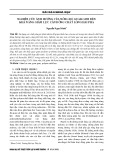
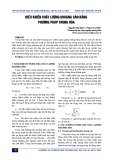



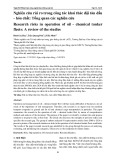
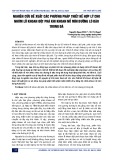


![Thiết bị phản ứng trong công nghiệp hóa dầu [mới nhất]](https://cdn.tailieu.vn/images/document/thumbnail/2015/20151211/ntchung8894/135x160/5641449829003.jpg)
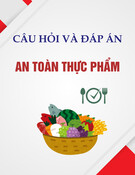





![Bài giảng Chế biến khoáng sản vô cơ [Mới nhất]](https://cdn.tailieu.vn/images/document/thumbnail/2025/20251025/thanhvan173002/135x160/21521761538638.jpg)
